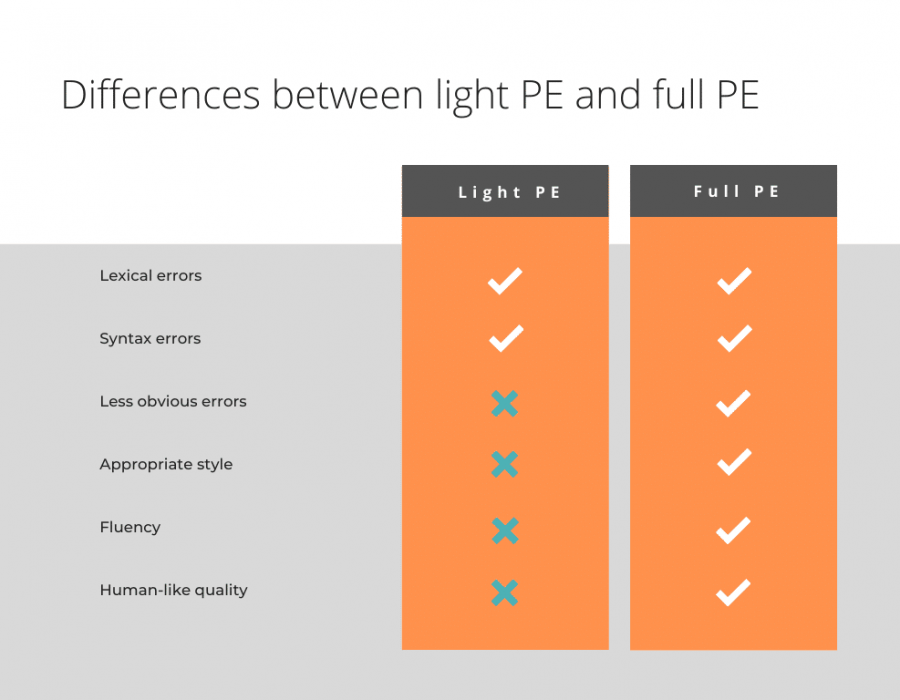Service
Post-editing of machine translation output is the process of reviewing machine translated content and editing it in such a way that it meets the requirements of the client. In other words, Machine Translation Post-Editing (or MTPE) works by having human oversight over MT output. Original sources are translated en masse by machine translation (MT) engines. Then our trained and fluent reviewers edit the resultant content for readability and accuracy.
While machine translation quality has come on leaps and bounds since the introduction of neural machine translation, it’s not quite ready to replace a human translator. This means that machine translation doesn’t provide flawless translations, but it rather requires the contribution of a professional linguist in order to reach the final result. The process of reviewing, correcting or rearranging an MT output is called Post-Editing. Post-editing differs from editing in that the latter refers to checking a human translator’s work against the source text whereas post-editing refers to checking a text produced by a software. In addition, editing must be bilingual, whereas post-editing may be bilingual or monolingual, although serious clients always opt for bilingual check.
MTPE focuses on:
Post-editing cannot be used in every scenario possible, and there are still certain areas, such as marketing and literature, where a human touch is necessary and MTPE is simply not done.
In addition, EuroTranslate is familiar with subtle nuances of linguistic considerations in Slavic languages and how to resolve common MTPE “headaches” with male/female verb and adjective forms, multitude of case-forms, congruence and other issues that don’t usually occur in, for example, the English language.
691a74634ea8f
There are two basic categories of Machine Translation Post Editing and these are the basic services we offer at EuroTranslate:
691a746351959
Light post-editing is a form of MTPE that requires minimal intervention by the post-editor and is a basic overview of the translated text to check for major issues and unreadable lines.
• In this type, editors do not implement major stylistic changes to the machine-translated content; they only check the text for grammatical and other linguistic flaws.
• Light post editing translation saves time and money but does not serve the need for creativity or precise language localization. In other words, light MTPE is more concerned with delivering the meaning of the source document properly, not caring about the human touch.
• The expectation for this sort of translation usually is that the client will be utilizing the translated text for inbound purposes only, when the translation is needed urgently, or when the deadline and text are short.
Full post-editing involves a greater level of intervention and works after the machine translation to ensure the right level of quality is achieved.
- Full post editing involves the implementation of extreme changes and heavy edits.
- Definitely, full post editing takes more time and costs more money, but it addresses the machine translated text more intensively and takes care of details like small nuances, idioms, and other figurative languages.
- The expectation with this translation service is that the outcome will be a text that is of high quality and will be used for assimilation and even for dissemination, for inbound and for outbound purposes.

